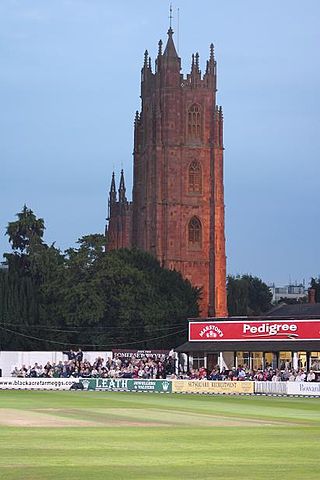
Taunton is the county town of Somerset, England, with a 2011 population of 69,570. Its thousand-year history includes a 10th-century monastic foundation, Taunton Castle, which later became a priory. The Normans built a castle owned by the Bishops of Winchester. Parts of the inner ward house were turned into the Museum of Somerset and Somerset Military Museum. For the Second Cornish uprising of 1497, Perkin Warbeck brought an army of 6,000; most surrendered to Henry VII on 4 October 1497. On 20 June 1685 in Taunton the Duke of Monmouth crowned himself King of England in a rebellion, defeated at the Battle of Sedgemoor. Judge Jeffreys led the Bloody Assizes in the Castle's Great Hall.

The West Somerset Railway (WSR) is a 22.75-mile (36.6 km) heritage railway line in Somerset, England. The freehold of the line and stations is owned by Somerset County Council; the railway is leased to and operated by West Somerset Railway plc ; which is supported and minority-owned by charitable trust the West Somerset Railway Association (WSRA) and the West Somerset Steam Railway Trust (WSSRT). The WSR plc operates services using both heritage steam and diesel trains.

Taunton Deane was a local government district with borough status in Somerset, England. Its council was based in Taunton.

Wellington is a market town in rural Somerset, a county in the west of England, situated 7 miles (11 km) south west of Taunton in the Somerset West and Taunton district, near the border with Devon, which runs along the Blackdown Hills to the south of the town. The town has a population of 14,549, which includes the residents of the parish of Wellington Without, and the villages of Tone and Tonedale.

Milverton is a village and civil parish in Somerset, England, situated in the valley of the River Tone 5 miles (8.0 km) west of Taunton in the Somerset West and Taunton district. The village has a population of 1,438. The parish includes the hamlet of Preston Bowyer.
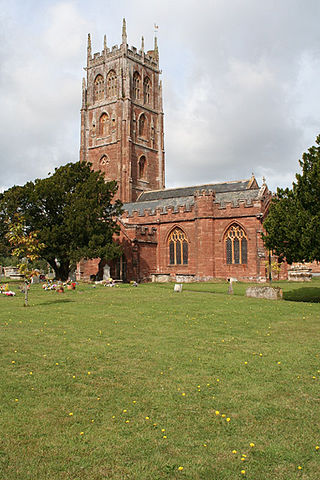
Bishops Lydeard is a village and civil parish located in Somerset, England, 5 miles (8 km) north-west of Taunton in the district of Somerset West and Taunton. The civil parish encompasses the hamlets of East Lydeard, Terhill, and East Bagborough, and had a population of 2,839 persons as recorded in the 2011 census; this figure, however, includes the village of Cotford St Luke.

Cothelstone is a village and civil parish in Somerset, England, situated in the Quantock Hills six miles north of Taunton in the Somerset West and Taunton district. The parish, which includes the hamlet of Toulton, has a population of 111.

Langford Budville is a village and civil parish in Somerset, England, situated near the River Tone 2 miles (3.2 km) north-west of Wellington, 4.5 miles (7.2 km) from Wiveliscombe and 6 miles (9.7 km) west of Taunton in the Somerset West and Taunton district. The parish includes the hamlets of Bindon, Lower Chipley, Lower Wellisford, Ramsey and Runnington. The parish has a population of 535.

Lydeard St Lawrence or St Lawrence Lydiard is a village and civil parish in Somerset, England, situated 7 miles (11.3 km) north west of Taunton in the Somerset West and Taunton district. The village has a population of 506. The parish includes the hamlets of Westowe, Hoccombe and Pyleigh, with its 16th century manor house.

Stawley is a village and civil parish in Somerset, England, situated 10 miles (16.1 km) west of Taunton in the Somerset West and Taunton district. The parish has a population of 279 and includes the village of Kittisford and the hamlets of Appley, Greenham and Tracebridge.

West Bagborough is a village and civil parish in Somerset, England, about 5 miles (8.0 km) north of Taunton in the Somerset West and Taunton district. In 2011 the village had a population of 358.
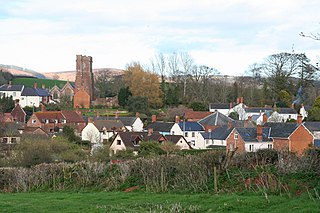
Stogumber is a village and civil parish in Somerset, England, on the eastern flank of the Brendon Hills. Besides Stogumber village itself, the parish includes the hamlets of Ashbeer, Capton, Escott, Higher Vexford, Kingswood, Lower Vellow, Lower Vexford, Preston, and Vellow. The village is on the route of the Samaritans Way South West.

Bishops Lydeard railway station is a heritage railway station in the village of Bishops Lydeard, Somerset, England. It is the southern terminus for regular trains on the West Somerset Railway.
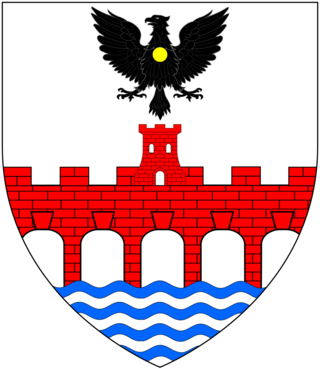
The Lethbridge Baronetcy, of Westaway House in Devon and Winkley Court in the County of Somerset, is a title in the Baronetage of the United Kingdom. It was created on 15 June 1804 for John Lethbridge, who was later Member of Parliament (MP) for Minehead in Somerset, from 1806 to 1807. The second Baronet sat as MP for Somerset between 1806 and 1812 and 1826 and 1830.
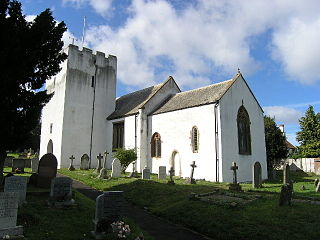
Withycombe is a village, civil parish, and former manor 2.5 miles (4 km) south east of Dunster, and 5 miles (8 km) from Minehead within the Exmoor National Park in the Somerset West and Taunton district of Somerset, England. The parish includes the village of Rodhuish. The manor house of the manor of Withycombe survives as Sandhill Farm.

Cothelstone Manor in Cothelstone, Somerset, England was built in the mid-16th century, largely demolished by the parliamentary troops in 1646 and rebuilt by E.J. Esdaile in 1855–56.

Taunton Deane was a local government district with borough status in Somerset, England. It merged with West Somerset to form Somerset West and Taunton on 1 April 2019. Its council was based in Taunton. The district was formed on 1 April 1974, under the Local Government Act 1972, by a merger of the Municipal Borough of Taunton, Wellington Urban District, Taunton Rural District, and Wellington Rural District. Taunton Deane was granted borough status in 1975, enabling the mayoralty of Taunton to be continued, when other districts did not have mayors. The district was given the name of an alternate form of the Taunton Deane Hundred.

Sir John Lethbridge, 1st Baronet, of Whitehall Place, Westminster; Sandhill Park, Somerset; Westaway in the parish of Pilton, Devon, and Winkleigh Court, Winkleigh, Devon, was Member of Parliament for Minehead in Somerset from 1806 to 1807. He served as Sheriff of Somerset in 1788–9. In 2010 he was discovered to have been the natural father of Claire Clairmont, and thus the grandfather of Lord Byron's daughter Allegra.

Sir Thomas Buckler Lethbridge, 2nd Baronet (1778–1849) of Sandhill Park in the parish of Bishops Lydeard and of Royal Crescent, in Bath, both in Somerset, was an English politician and soldier.


















